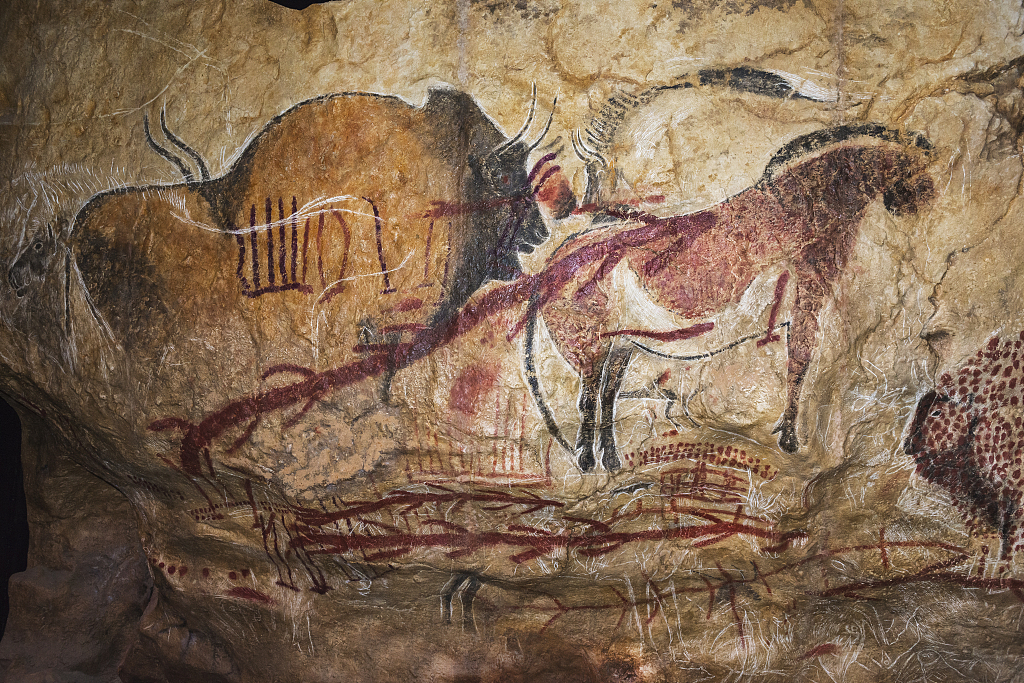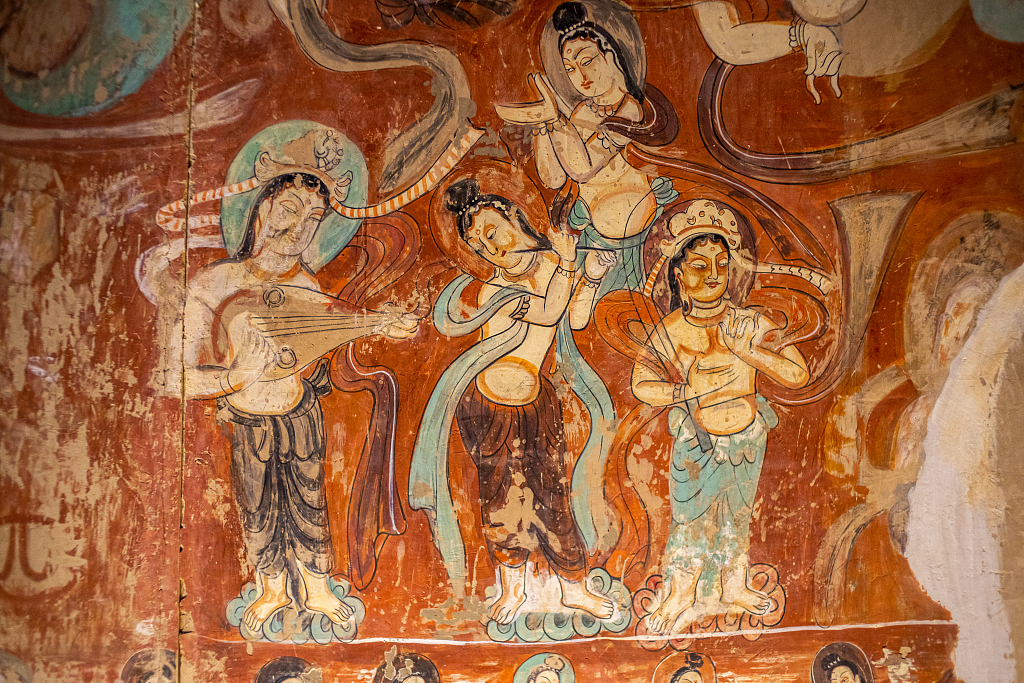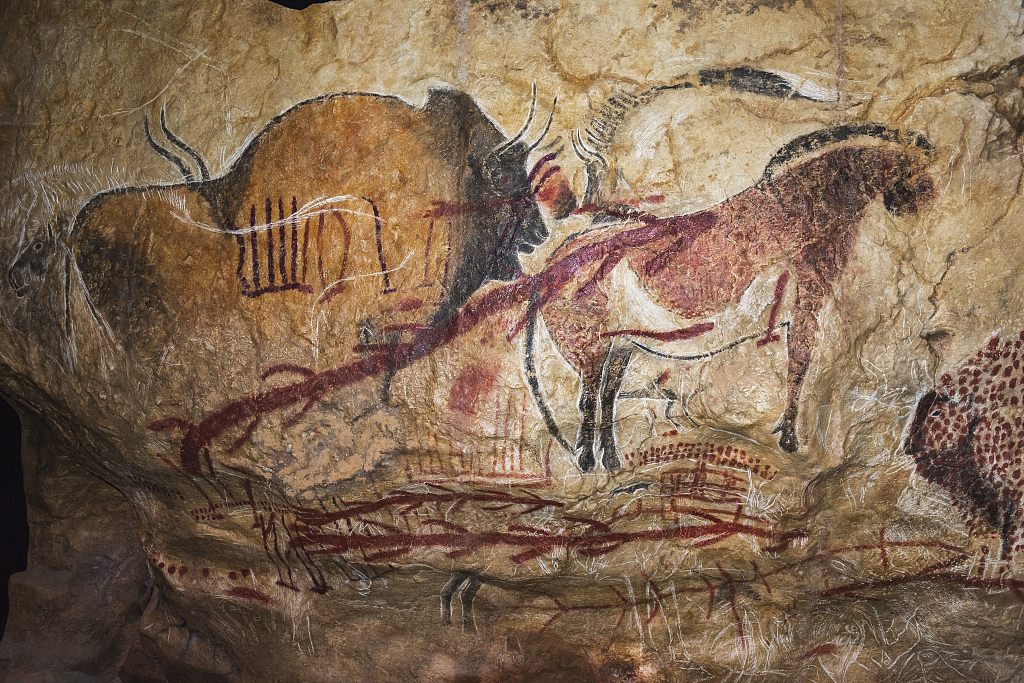Lascaux Cave in France and the Mogao Grottoes in China both stand as distinguished cultural heritage sites, each with its own rich history.
 An undated photo shows the ancient paintings of the Lascaux Cave in France. /CFP
An undated photo shows the ancient paintings of the Lascaux Cave in France. /CFP
An undated photo shows the ancient paintings of the Lascaux Cave in France. /CFP
Located in southern France, the Lascaux Cave is best known for its 17,000-year-old cave paintings. Revered for their remarkable painting techniques and lifelike depictions of animals, these masterpieces depict scenes of human life and the animal kingdom from the late Upper Paleolithic era. They represent some of humanity’s earliest artistic expressions and showcase the creativity and aesthetic sensibilities of our ancient ancestors.
 An undated photo shows the murals of the Mogao Grottoes in Dunhuang, Gansu Province, China. /CFP
An undated photo shows the murals of the Mogao Grottoes in Dunhuang, Gansu Province, China. /CFP
An undated photo shows the murals of the Mogao Grottoes in Dunhuang, Gansu Province, China. /CFP
The Mogao Grottoes, located in Dunhuang City in Gansu Province, China, have a history dating back to 366 AD, where they represent the pinnacle of ancient Buddhist art in China. With numerous caves housing thousands of Buddhist statues, murals and scriptures, the Mogao Grottoes serve as a testament to the grandeur of ancient Chinese Buddhist culture. These murals depict Buddhist scriptures, the life stories of Buddha and historical events, revealing the exquisite painting techniques and profound spiritual beliefs of ancient China.
Despite their differences in age, location and cultural context, both the Lascaux Cave and the Mogao Grottoes are invaluable treasures of human civilization, offering unique and profound insights into our shared history and artistic heritage.
